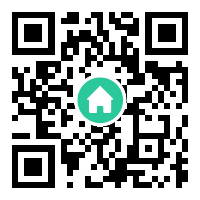Telegram sticker bots have revolutionized the way users communicate on the platform, offering a dynamic and creative alternative to traditional emojis and text. These bots allow users to create, share, and manage custom sticker packs directly within Telegram, enhancing conversations with personalized visuals. As a cornerstone of Telegram’s ecosystem, sticker bots blend functionality with fun, making them a favorite tool for both casual users and communities.
The Rise of Telegram Sticker Bots
Telegram sticker bots emerged as a response to the growing demand for expressive communication. Unlike static emojis, stickers provide animated or illustrated visuals that capture emotions, humor, and cultural references. Telegram’s open API enabled developers to create bots that simplify sticker creation and distribution. Today, these bots empower users to design stickers without technical expertise, fostering a vibrant ecosystem of user-generated content. From meme culture to brand promotions, sticker bots have become a universal language on the platform.
How Telegram Sticker Bots Work
A Telegram sticker bot operates through a series of intuitive commands. Users start by initiating a chat with a sticker bot, such as @Stickers or third-party alternatives. The bot guides them through uploading images, cropping them into sticker formats, and assigning emoji triggers. Once a sticker pack is created, the bot generates a shareable link, allowing others to add the pack to their Telegram library. Advanced bots even support animated stickers, layer-based editing, and collaborative pack creation. This seamless process democratizes sticker design, turning anyone into a digital artist.

Why Sticker Bots Matter for Engagement
Telegram sticker bots are more than just novelty tools—they drive user engagement. Stickers add personality to conversations, making interactions memorable. Communities and brands leverage custom stickers to build identity; for example, a gaming group might use character-themed packs, while a business could design stickers reflecting its products. Additionally, sticker bots encourage participation: users often share their creations publicly, sparking trends and viral moments. This organic sharing amplifies visibility for creators and fosters a sense of belonging among users.
Creating Your Own Sticker Pack: A Step-by-Step Guide
To create a sticker pack using a Telegram sticker bot, follow these steps: First, search for a sticker bot like @Stickers and start a chat. Use the /newpack command to name your pack and set an emoji association. Next, upload images in PNG or WEBP format—the bot will automatically resize them. Assign emojis to each sticker for easy access during chats. Finally, publish the pack with /publish and share the link. For animated stickers, ensure files are in TGS format and under 512 KB. With practice, you can craft professional-quality packs in minutes.
The Future of Telegram Sticker Bots
The evolution of Telegram sticker bots shows no signs of slowing. Developers are integrating AI tools to automate design processes, such as generating stickers from text prompts or photos. Monetization features, like premium sticker subscriptions, are also gaining traction. Moreover, cross-platform compatibility could allow Telegram stickers to be used in other apps, expanding their reach. As augmented reality (AR) and 3D stickers become mainstream, these bots will continue redefining digital expression, solidifying Telegram’s position as a hub for innovative communication.
Conclusion
Telegram sticker bots exemplify the platform’s commitment to creativity and user-centric innovation. By simplifying sticker creation and fostering community-driven content, these bots have transformed how millions express themselves online. Whether for personal use, branding, or cultural exchange, Telegram sticker bots offer limitless possibilities—one sticker at a time.












